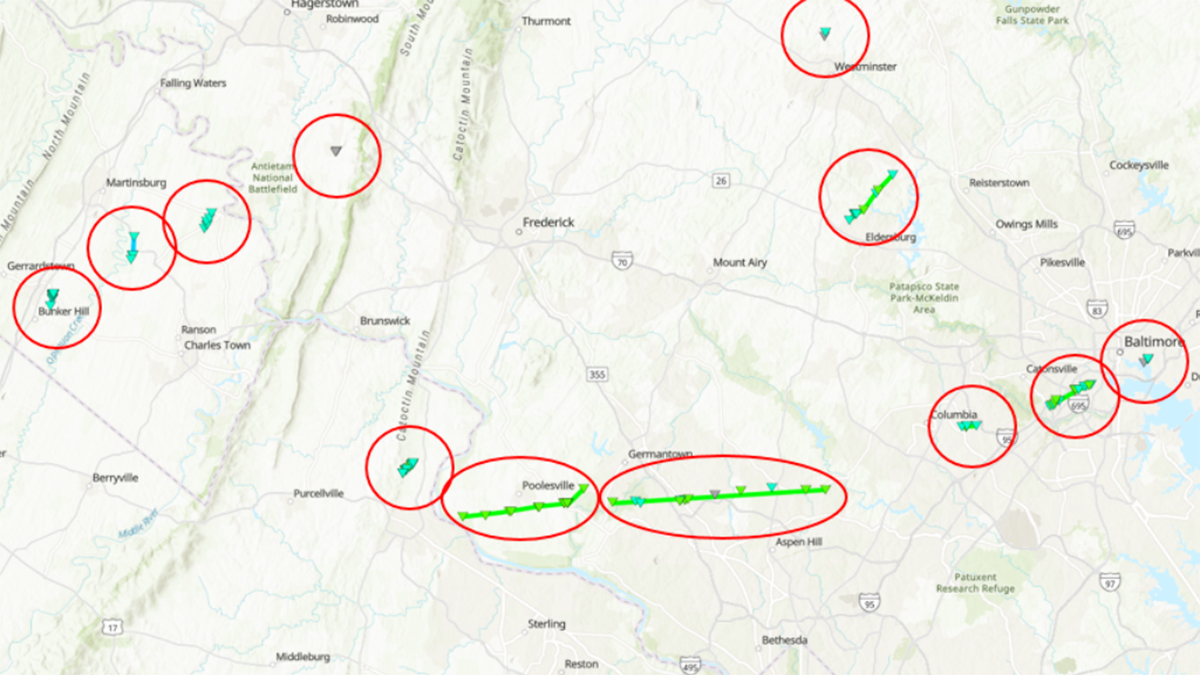The Woodlawn plantation in Northern Virginia has long been one of those iconic sites of American history. Once part of a massive Mount Vernon property, it was home to George Washington’s step-granddaughter, Nelly Custis Lewis, and her husband, Lawrence Lewis, who in turn was Washington's nephew.
For decades, they were the focus of tours. But a few weeks ago, that all changed with the opening of a new exhibition.

The Woodlawn reboot gives gives a more complete picture of history and of the people who lived there.
We're making it easier for you to find stories that matter with our new newsletter — The 4Front. Sign up here and get news that is important for you to your inbox.
'Woodlawn is not the fully encompassing history of just one group of people'
In a major shift, visitors will hear about an enslaved cook named Hanson and see his recipes, learn about the Quakers who later bought the land, and meet the free Quander and Holland families, who farmed there.
Northern Virginia
Northern Virginia news, events and updates
"The overarching goal is, definitely, we want more people to feel themselves and see their stories reflected in the history of this site, that Woodlawn is not the fully encompassing history of just one group of people," said Elizabeth Reese, an associate marketing manager for Woodlawn.
Perhaps the most interesting story came after the Lewis family left. Quakers bought the land and launched an antislavery colony well before emancipation. A map shows how Woodlawn plots were split up and sold to both white and Black families.

"So they subdivided the land here into smaller farm plots where white families and free Black families worked side by side to prove that this was a success," Reese said.
That's where the Quanders and Hollands entered the picture. One of the land buyers was a descendent of those who were once enslaved on the property.
"One of their descendants, William Holland, purchases 20 acres here in 1856 and he works here," Reese said.
The Quanders and Hollands are not lost to history — their descendants still live and work nearby in Fairfax County. And the Quakers' Alexandria Friends meeting house still holds services on the property.

Woodlawn was purchased by the National Trust for Historic Preservation in 1952.
"It's part of the tour experience to have the stories of these people to really shine through with this site, because they're a part of this history just as anyone else is," Reese said.
The new storylines are not tucked away but interspersed throughout the house.
The research needed to start providing a more complete picture is ongoing. George Mason University students were tasked with creating a display exploring the indigenous people called the Doeg, who were there long before Woodlawn was built. Local descendants are bringing in indigenous artifacts as offerings.

"Both of these exhibits are really a first step for us in exploring the histories here in working in conjunction with community members," Woodlawn Interim Director Heather Johnson said.
They hope that by shining a light on Woodlawn's fuller story, even more visitors will want to make their way to the history-rich property.
Woodlawn is open Thursdays through Mondays — including Memorial Day — from 10 a.m. to 4 p.m.



